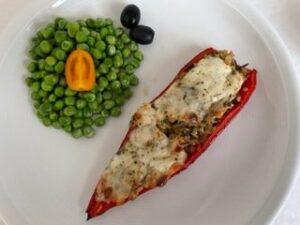Pea cultivation has been documented for thousands of years before Christ – initially in Asia. In the Roman Empire, among the Greeks and the Germanic tribes, peas were a staple food. The protein-rich legume reached Europe via Greece and Turkey. Freshly harvested peas were only kept for a short time and were mainly dried until the 17th century.
Especially during the past decades, peas were incomprehensibly unpopular. However, the demand for a meat-free diet and healthy plant protein is growing louder. A “renaissance” of peas, chickpeas, and lentils occurs. Pea cultivation in Switzerland and Germany would serve to cultivate fields. In times of climate change, chickpeas, for example, would be helpful despite a particular sensitivity to frost because of their drought tolerance. Incidentally, the outer cover protects the ripening peas against harmful environmental influences. Pollutants from the air are primarily contained. The cultivation areas for various pea varieties still need to be more extensive compared to the 1950s. However, suitable types are being sought.
Peas are an essential source of protein and contain plenty of B vitamins and numerous dietary fibres. The exceptional combination of amino acids makes pea proteins a boon for connective tissue, skin, hair and muscle building. Pea proteins support the body's health and performance and positively influence fat blood levels. However, peas should not be eaten raw because of the lectin content.
Due to their short shelf life and loss of flavour, peas are mostly found on this country's frozen or canned shelves. More and more also dried. Numerous well-known companies now offer pea protein powder as a food supplement.
Peas have a relatively high nutritional value and are correspondingly high in calories. In addition to the B vitamins mentioned above, the legumes contain vitamins A and C and a considerable amount of folic acid. Valuable ingredients are also iron, calcium, potassium, magnesium and zinc.
In the kitchen, the pea is versatile in its use and processing: pea dipping sauces, side dishes, stews, mush, soups and other delicate creations.
Peas with spicy wild rice and hummus or fried tofu:

Asparagus – pea soup
- Wash and finely chop three spring onions.
- Sauté in olive oil and a little whisky.
- Add 1 litre of vegetable stock (for example: stir two tablespoons of Morga vegetable stock fat-free into 1 litre of water).
- Add three tablespoons of dried parsley and chives, two bay leaves, and some chilli pepper.
- Add the pre-cooked peas (half-hard) and the sliced, thin green asparagus to a boil.
- Bring to a boil.
- Do not let the asparagus and peas become wholly soft; season if necessary.
- Serve.
If desired, it can also be topped with yellow curry and spiced ginger soy or coconut cream.
Peas with wild rice stuffed, gratinated pepperoni – “shuttle.”

The Princess on the Pea
Once upon a time…
There was a prince who wanted to marry a princess. A real princess! So, he travelled – but unfortunately unsuccessfully – all over the world. There were many princesses, but he could not determine whether they were real. He came home again. He was sad because he wanted to find an actual princess and marry her.
One evening, a terrible storm came up. There was thunder and lightning, and the rain was pouring down. Then there was a knock at the city gate, and the old king opened it.
A princess was standing in front of the gate. She looked battered by the storm. The water ran from her hair and clothes into her shoes. She claimed to be an actual princess.
“That can be determined!” thought the old queen without making her thoughts known. She went to the bed chamber, removed the bedding, and placed a pea on the floor. She covered the pea with twenty mattresses and twenty eiderdowns.
This was where the princess was to spend the night. In the morning, “the princess on the pea” was asked how she had slept.
“Oh, terribly badly!” replied the princess.
“I didn't sleep a wink for most of the night! God knows what has been lying in this bed. I have lain on something hard, so I feel bad all around! Quite dreadful!”
Then the queen rejoiced. She realised that only a princess could feel a pea over twenty mattresses and twenty eiderdowns.
The prince knew he had found his princess, and they were married.
The pea went to the art chamber, where it can still be seen today if no one had stolen it.
A fascinating story!
More about the fairy tale:
